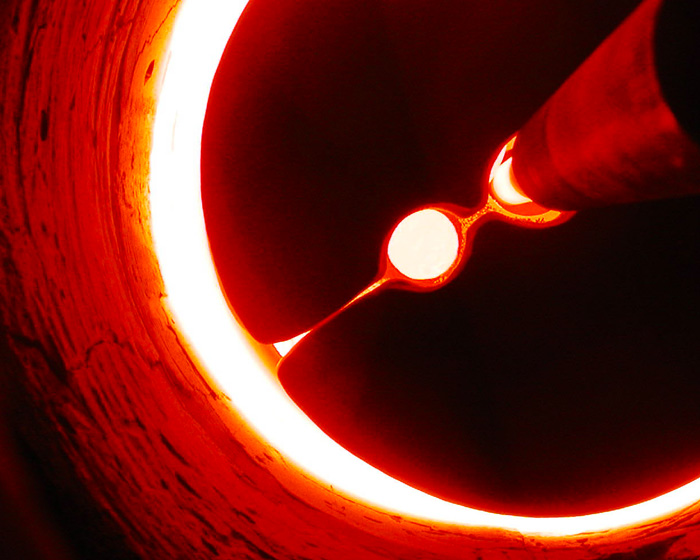Arthur hydrotest breaks record with 8 diagnostics
Behind every success is innovation and teamwork

Andrea Albert is fully entrenched in supporting weapons science experiments, but her Physics (P) Division group sits in the Physical Sciences Directorate, not in a weapons organization. “I love the work I do, and the subcrit team is full of great collaborators,” she said. “I take pride in working on experiments that directly relate to stockpile stewardship and global security.”

The experiment
Physics Division scientists collaborated on a hydrodynamic test called Arthur, which paved the way for the upcoming Excalibur Subcritical Experiment series at the Nevada National Security Site studying various material properties under extreme conditions. This data improves computer models used to evaluate the health of the nation’s current nuclear weapons in the absence of actual nuclear testing.
Arthur involved more than 200 people from Physics, Engineering Technology and Design, Weapon Stockpile Modernization, Sigma, Weapon Systems, Prototype Fabrication, Integrated Weapons Experiments, Materials Physics and Applications, and Dynamic Experiments divisions. It took place at the Lab’s Dual-Axis Radiographic Hydrodynamic Test (DARHT) facility.
Can we do this?
Physics Division scientists collaborated with weapons modelers in X Theoretical Design Division to design the experiment and create a tailor-made diagnostics suite. For the distance and velocity measurements, Albert and team had to innovate because they were asked to provide denser measurement points than they had done before.
“The moment of truth was when the shot was fired, and we all checked to make sure we got data,” Albert said. “We had a preliminary data review six weeks after the experiment, and it was so exciting to see the amount and quality of data we got. It was a huge success!”
“P division brought several diagnostics not normally fielded at DARHT but that will be fielded as part of the larger Excalibur program,” said diagnostics coordinator Chris Frankle (Physics Division). “In addition to collecting data on the functioning of the Arthur device, proving that all of the diagnostics could function well together before going to a much more expensive subcritical experiments series was important.”
The happy customer
Arthur now holds the record for fielding the most diagnostics on a DARHT hydrotest, according to DARHT lead Kim Schultz (Dynamic Experiments Division). “P division did several preliminary experiments on a new type of probe for Arthur, developed the layout for the probe dome, and provided some diagnostics equipment to supplement the DARHT diagnostic suite,” said Schultz. “Arthur was my first time working with them so closely.”
What did it take?
“It took unprecedented coordination and teamwork to make this happen,” Albert said. The experiment was over in microseconds, and all eight instruments had to turn on at exactly the right moment to capture the data.

Dual-Axis Radiographic Hydrodynamic Test (DARHT) facility
The world’s most powerful x-ray machine for analyzing nuclear weapons was built at Los Alamos in the late 1990s. It generates a sequence of x-ray images showing the dynamic events that trigger a nuclear detonation. DARHT experiments, in combination with accurate computer simulations, help scientists guarantee—without full-scale nuclear testing—that stockpiled nuclear weapons would perform as specified if they were ever needed.
Subcritical experiments
To enhance the safety of stockpiled nuclear weapons, scientists run tests on the performance of nuclear weapon components under extreme conditions. While these experiments involve high explosives and nuclear material (like plutonium), there’s no big boom. Unlike historic nuclear testing, these physics experiments won’t achieve a self-sustaining nuclear chain reaction, or criticality.
Hydrodynamic test
A mock implosion is called a hydrodynamic test, or hydrotest. Instead of nuclear fuel, a heavy metal surrogate (such as depleted uranium or lead) is used, but all other components can be exact replicas of real nuclear weapons to test their behavior under implosive conditions. During a hydrotest, the surrogate fuel and other components become hot enough to melt and flow like liquid. Images are taken of the weapon mockup’s interior as the molten components rush inward at thousands of meters per second.
Dynamic imaging
The Nuclear Security Enterprise needs dynamic imaging data to underwrite the nuclear deterrent. These critical data needs range from focused experiments on materials and components to integrated systems experiments. The experimental requirements include the ability to handle high-hazard materials, classified devices, and classified data. The current national facility portfolio to deliver this data includes the Los Alamos Neutron Science Center, DARHT, the Contained Firing Facility, and firing sites at Los Alamos and Lawrence Livermore national laboratories.
Customer
There are customers internal to the Lab and customers external to the Lab. Here, customer means who is paying for the services.



